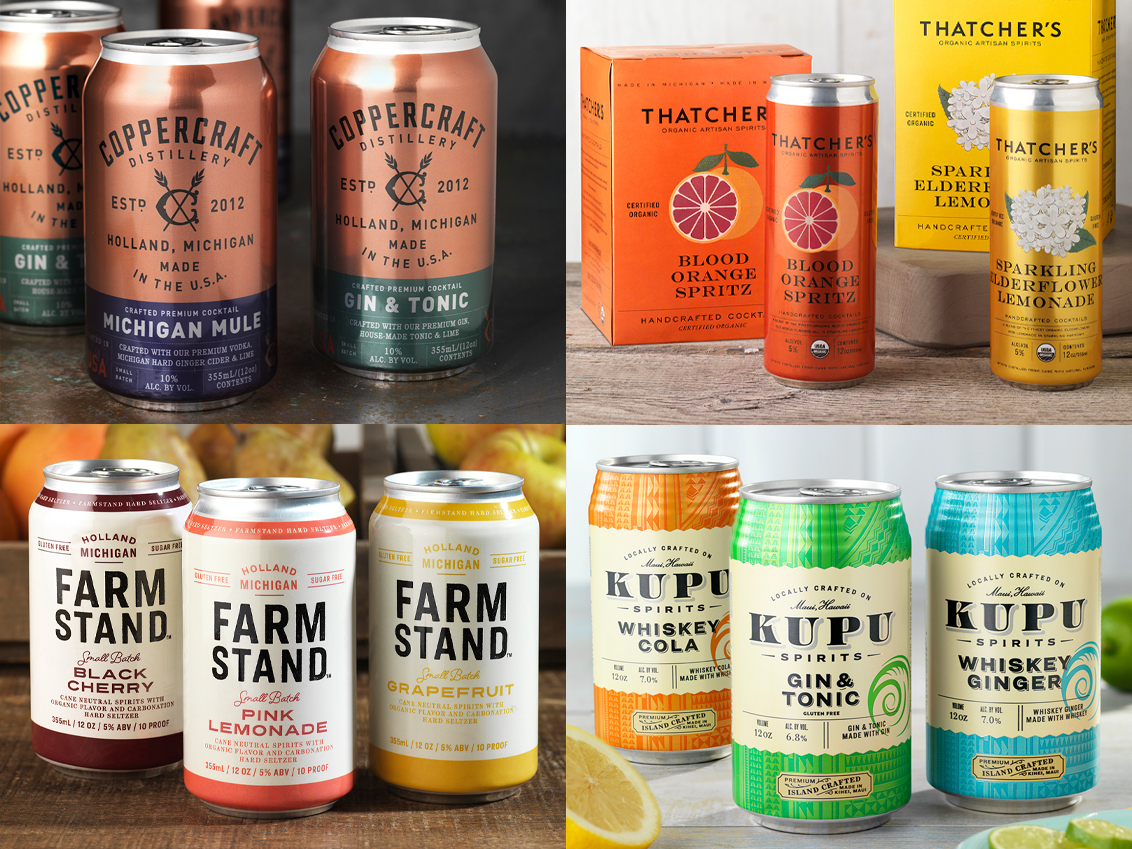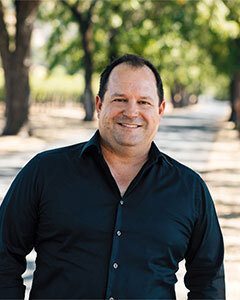Published in the Summer 2023 issue of Artisan Spirits Magazine.
Does it make sense? Should you extend into RTDs? Here are some key considerations.
So, you’re looking to get into the ready-to-drink category, and you’re probably wondering where to begin. Maybe you have spirits aging in barrels and need to gain revenue while they mature. Maybe you’re ready to appeal to a different segment of the market. What should your design look like? Well, before you dive into branding, you will need to ask yourself a few more questions to make sure an RTD expression of your brand makes sense.
1. What is your strategic architecture? House of Brands vs. Branded House.
Have you built a Branded House or a House of Brands? This is an important distinction to make as you expand into alternate packaging methods such as RTDs. A quick refresher:
- Branded Houses utilize a single brand strategy and have a uniform brand expression across all products. An example of this is Jose Cuervo: the family-owned tequila company uses the same overall branding to maintain brand recognition and credibility across their product mix. This includes various styles of tequila, RTDs, seltzers, and margarita mixes. They have the esteem and pedigree to carry quite a bit of weight with the consumer, who is likely to reach for a Jose Cuervo RTD rather than one named and packaged differently, even if it was the same product.
- The House of Brands model is a multi-brand strategy and all the products in your company arsenal bear their own unique brand names and look completely unrelated. An example of this is Brown-Forman, who owns Jack Daniel’s Whiskey, Herradura Tequila, and Finlandia Vodka—three standalone brands within their respective alcohol beverage categories.
There are pros and cons to both strategies and largely depend on your company’s exit strategy, production volume and marketing budget, but once you’ve determined which strategy makes the most sense for you/which one you are, you are closer to determining a direction for your RTD look. Read our article Branded House vs House of Brands for Alcohol Beverage Branding for more details on these two brand strategies.
2. What is your main product’s price point?
If you have a luxury whiskey that commands $200 a bottle —creating an RTD with the same name and look may not make sense for your brand. At best, it can cause confusion in the market, and at worst, it can possibly degrade the success and diminish the pedigree of your core brand promise. If you have a more everyday whiskey, for example, that is priced at $50 a bottle— RTDs could work symbiotically with your brand promise and offer an entry point into your brand while providing additional cash flow while product ages in barrels.
3. What is your product mix? How will an RTD fit into the mix?
These questions may seem overly simple. Their answers, however, can have complicated implications.
For example: If your core product is bourbon, will your RTDs all be bourbon cocktails?
- If yes, which cocktails will you choose, and who will make your formulas? Will it be your own product in the RTD, or would it be more cost-effective to utilize bulk spirits? How will you manage logistics with filling and transporting the RTDs, and how will you price them in accordance with your portfolio?
- If no, will your RTDs include clear spirits like vodka? Which cocktails will you choose, and who will you source from? And how will you introduce this packaging and product extension into the market? How will your consumer react to these different offerings?
4. Are you prepared for a design investment?
The proclivity of many companies to extend into a different product category within the same brand isn’t always the best decision, as it can lead to diminishing the core brand’s success by diluting the brand promise. Extending your main line into an RTD can often be a cost-effective way to scale your business and provide cash flow, but this is not without its design challenges. Labels and packaging from a 750ml format don’t often translate easily to smaller RTD bottles or to cans that utilize fully-wrapped graphics. The best RTD extensions of core brands build on their brand universe; making their RTDs unique while part of their brand vs. simply being a cut-and-paste exercise. Creating a successful extension can many times prove to be similar in time, money, and energy to creating a stand-alone RTD brand.
Assessing and analyzing all factors at play as you start to delve into another expression of your brand is always of the utmost importance. While there will be many other aspects to consider for your specific brand, if you begin your strategic planning by answering the previous questions, you will be on the right path to determining if an RTD extension is the next step for your brand.
- The Core 4 – Setting the Foundation for Your Brand - September 19, 2025
- The Rise of Low & No Alcohol Spirits: A $4 Billion Bandwagon - July 21, 2025
- The Private Label Opportunity and Bulk Spirits - March 25, 2025


Leave a Reply